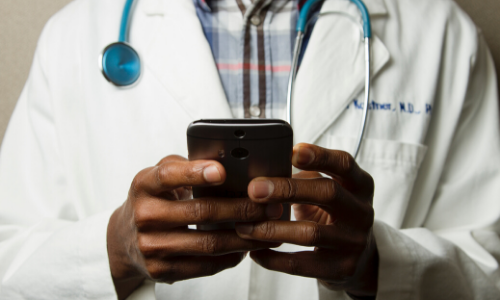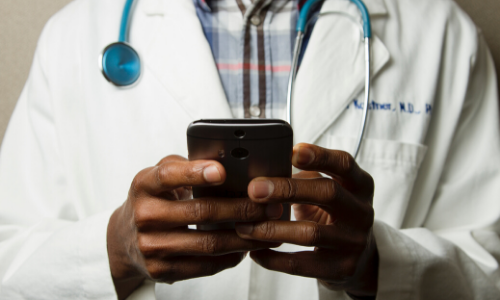Ask any healthcare providers why they pursued a career in medicine, and it’s unlikely that “billing,” “record-keeping,” or “paper shuffling” will be on the list.

Medical practitioners want to heal and educate their patients, not fill out paperwork or sit in front of a computer screen. Unfortunately, the realities of today’s healthcare system put a premium on documentation and data. Faced with endless forms and duplicate recording keeping – not to mention concerns about compliance – many doctors and other healthcare professionals end up feeling frustrated and underutilized.
Thankfully, the advent of Electronic Health Records (EHR) is changing the paradigm. Gone are the endless hours tracking down data or compiling reports. Instead, healthcare providers can use EHR to streamline tasks, reduce errors, improve efficiency, and spend more time on patient care.
So how transformative is EHR for the modern healthcare professional? Here’s our list of the 12 benefits of EHR systems.
Improved Record-Keeping
Security, Access, and Consolidation
Overflowing filing cabinets and spreadsheets have been the bane of every medical office manager for the past several decades. Paperwork piles up, and in order to track down an important piece of information or pull out that one specific document, staff had to spend hours digging through records.
With EHR, all important information is stored securely in the cloud. This consolidated database provides enhanced security through customized access and other cybersecurity features like encryption, two-factor authentication, and more. Administrators can configure their EHR systems so that only certain staff members can access sensitive data, enabling the medical office to comply with HIPAA and other healthcare security regulations.
With so many security protocols in place, many EHR platforms can provide additional protection against ransomware and cyber-attacks. Additionally, the remote server locations used to store data are often equipped with the latest in IT security and “on-the-ground” safeguards like round-the-clock monitoring and server redundancy.
Even better, because data is stored on the cloud, patient information can be accessed instantly. This means no more digging through files or tracking down the last attending physician. Doctor’s notes, nurses’ notations, and any other medical information related to a patient is all kept in one centralized location.
Improved Efficiency
Fewer Errors, Faster Record-Keeping, Improved Workflows
With EHR, medical providers can improve operational efficiency through reduced data-entry errors, faster record-keeping, and streamlined workflows. EHR also enables complete oversight of patient records. That means healthcare directives and other patient care instructions aren’t lost in translation. Instead, the information is entered one time and is accessible by each one of the patient’s healthcare providers. Doctors can make more informed decisions about patient healthcare, and nurses and other providers can get questions answered quickly and easily, without having to track down physicians or spend time deciphering cryptic doctor’s notes. With an EHR, physicians can more easily connect to other referring physicians, giving them the ability to get a 360-degree view of the patient’s health.
EHR also enables healthcare providers to track their efforts with better analytics and reporting. With an effective EHR, a physician can see real-time data about the health of their practice. This data can include how they are coming along with attestation, MIPS reporting, and MACRA measurements.
Another advantage of EHR is the way it makes prescription management safe and convenient. By writing e-prescriptions within their EHRs, physicians can give patients the convenience of filling prescriptions while traveling to their pharmacists without having to keep track of a paper prescription. Physicians can also provide safer prescriptions because all relevant information is transmitted electronically, reducing the chances of prescription misinterpretation between the physician and pharmacist.
Finally, each step in the patient's journey can be documented and followed by all of the patient's healthcare providers. This streamlined workflow also applies to intake, billing, prescriptions, and many other facets of an organization's operations. By consolidating and automating tasks, each department can communicate swiftly and easily without the bottlenecks and stoppages associated with the traditional paper trail.
Cost Saving
Digital Records, Free Time, Faster Patient Consultations
EHR allows healthcare organizations and sole practitioners to reduce costs in a variety of ways. Perhaps the most obvious is by transforming older paper records – and the storage costs associated with those hard copies – into digital versions that can be securely stored in the cloud. In addition, by consolidating patient records into one database, staff can spend less time tracking down information and more time meeting with patients. And because patient intakes can be handled more efficiently, many healthcare providers can generate even more income by seeing more patients per day without compromising care.
By reducing manual documentation, EHR lets physicians create custom healthcare plan templates so they can quickly chart visits in just a few clicks. This gives them more time to spend face-to-face with patients. If something out of the ordinary does arise during the visit, the physician can then chart by exception and make quick document changes as needed.
Improved Morale
Happy Employees, Happy Patients, Happy Doctors
EHR also has the potential to improve staff morale by allowing them to ditch time-consuming and redundant tasks in favor of higher-level work that is more rewarding and more closely matches their career goals and expectations. Happy employees mean less turnover and fewer costs associated with onboarding and training new staff. Labor costs can also be lessened thanks to automated processes that allow for faster onboarding and easier employee training.
With 24/7 access to patient files, physicians can conveniently and safely access patients’ files from wherever they are, as long as they have access to the Internet. That means they can provide patient care on-the-go, without having to leave their child’s concert, dance recital, or ball game to run into the office to get information from a patient’s file. Physicians can also quickly code the visit while seeing patients, and sign off of documentation before the patient even leaves the office. This can also free up time for the staff members who are tasked with coding, reducing the time it takes to review the visit.
The bottom line is that EHR allows healthcare providers to spend more time with patients and less time on paperwork, and that shift translates directly to a better patient experience. In addition, patients can access their own health records and lab results online and can follow along during the exam room visit by watching their doctor enter their information in real-time. This means patients will be better informed about their healthcare and feel validated and cared for by their physician.
The Hub of Your Organization
With the right EHR platform, healthcare providers can turn their office team into a well-oiled machine. EHR can act as the hub from which all other administrative and patient care tasks can revolve. As the center of your practice, EHR has the potential to help you and your team operate more efficiently while also saving money and improving patient health.
To learn more about how the PCIS GOLD EHR can help improve your clinic’s workflows, reduce overhead, and increase patient satisfaction, visit our website and schedule a software demo.



